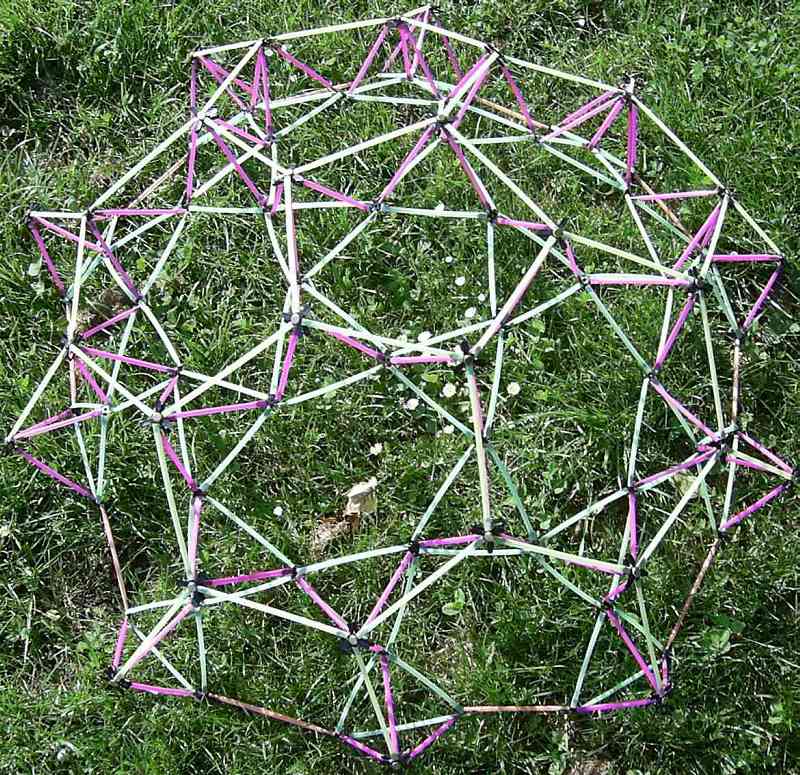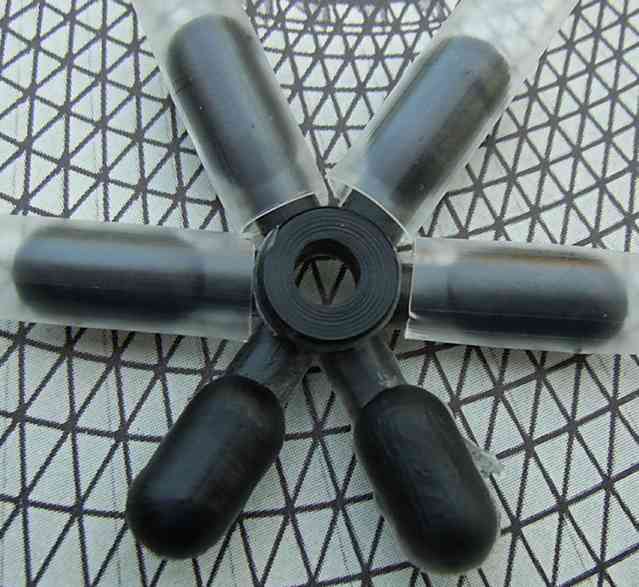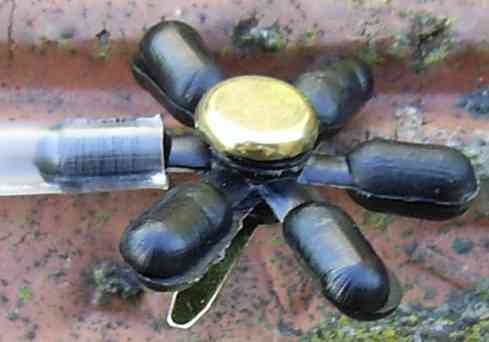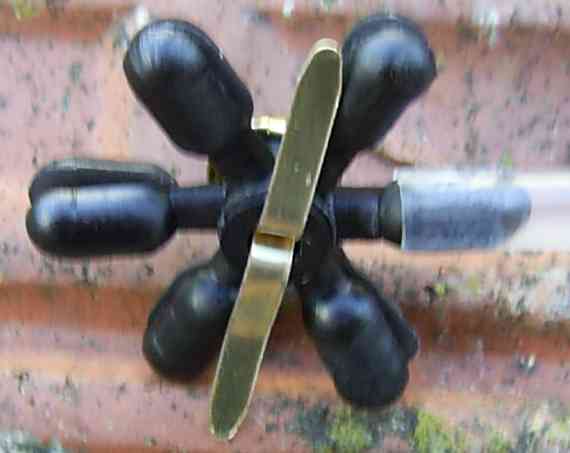*************************************************************************
Automated Hydroponic Gardening
Friday, March 25, 2011
*************************************************************************
Tuesday, March 22, 2011
Water Cube Architectural-The 2008 Olympics National Swimming Center - Home Design Ideas | Decorating | Gardening
by archinspire
This is the main venue for swimming events at the 2008 Olympics. Built by a team from the Australian architecture firm PTW, Arup, and China State Construction and Engineering (CSCEC) explored evolutionary biology, arcane 19th-century geometry, and the latest computer-modeling technology, racing against a competition deadline for the design of this swimming pools.
The team had already learned that Herzog & de Meuron’s bird’s-nest scheme was selected for the National Stadium next door. “We wanted to do something different from Herzog & de Meuron’s design,” recalls Tristram Carfrae, the leader of the Arup delegation. “Their’s was red and round, so our’s would be blue and boxy.” Since swimming pools need to be heated most of the year, the team figured that a greenhouse-a building that captures and holds solar energy-would be the most efficient structure for the job. That led to the notion of a continuous skin for the roof and walls, one that would be transparent or translucent. Glass wouldn’t be right, because its acoustics would create a din inside the building. So the team selected ethylene tetrafluoroethylene (ETFE), a transparent form of the plastic Teflon. In addition to being acoustically transparent, the material is lightweight and remarkably sturdy even at thicknesses as little as 0.008 inches (0.2 millimeters).
aquatic swimming pool olympcs china
Looking at forms and patterns found in nature, the group started designing the skin. They quickly focused on soap bubbles and what happens to their geometry when they congregate. At first, the designers tried clustering cylinders to create a flat roof and walls, but weren’t happy with the gaps between the cylinders and the awkward shift from vertical cylinders (to support the roof) to horizontal ones (to support the walls). In their search for the most efficient way to divide space into cells of equal size with the least surface area between them, the designers explored solutions proposed in the 19th century by Belgian physicist Joseph Plateau and British mathematician William Thomson Kelvin, and by the Irish physicist Denis Weaire and his assistant Robert Phelan in the late 20th century. Eventually, the team adapted Weaire and Phelan’s ideas, developing a building skin made of cells with either 14 or 12 sides. “We wanted the bubble pattern to seem random, not repetitious,” explains Chris Bosse, who was one of the project architects for PTW and now runs his own firm in Sydney called the Laboratory for Visionary Architecture (LAVA). Using the Weaire-Phelan geometry, the group created a skin made of 4,000 ETFE bubbles, some as large as 30 feet across, with seven different sizes for the roof and 15 for the walls.
A space frame assembled on-site from 22,000 steel tubes welded to 12,000 nodes holds the cells in place and provides a column-free structure with spans of 396 feet in either direction. The three-dimensional frame is nondirectional-meaning it has no up or down, left or right-making it perfect for a high-seismic zone such as Beijing. The chemically treated water in the pools and the air pollution outside the building, though, are both corrosive. So the design team placed the steel frame inside a cavity made of two layers of ETFE pillows. For the roof, the cavity is 25 feet deep, and for the walls it is 12 feet.
Called the Water Cube (even though it’s a box 584 feet square and 102 feet high, not a cube), the rectangular design won over the competition jury. Completed early this year, the building seems to float on water, thanks to a reflecting pool surrounding it and a gentle cascade of water washing down its base and into the pool. Inside, the bubble theme continues with circles incised on the floor of the main lobby and a Bubble Lounge on the second floor where-you guessed it-champagne is served at bars made of smooth Corian dotted with circles.
Related Searches: etfe, space frame design structures, swimming stadium interior, space frame water cube structure details org, water cube, architectural materials indoor pool competition, water cube plan
- Sent using Google Toolbar"
Space frame - Wikipedia, the free encyclopedia
Space frame
From Wikipedia, the free encyclopedia
Jump to: navigation, search
The roof of this industrial building is supported by a space frame structure.
A space frame or space structure is a truss-like, lightweight rigid structure constructed from interlocking struts in a geometric pattern. Space frames can be used to span large areas with few interior supports. Like the truss, a space frame is strong because of the inherent rigidity of the triangle; flexing loads (bending moments) are transmitted as tension and compression loads along the length of each strut.
Contents
[hide]
* 1 Overview
* 2 History
* 3 Applications
o 3.1 Construction
o 3.2 Vehicles
* 4 Design methods
* 5 See also
* 6 External links
[edit] Overview
Simplified space frame roof with the half-octahedron highlighted in blue
The simplest form of space frame is a horizontal slab of interlocking square pyramids built from aluminium or tubular steel struts. In many ways this looks like the horizontal jib of a tower crane repeated many times to make it wider. A stronger purer form is composed of interlocking tetrahedral pyramids in which all the struts have unit length. More technically this is referred to as an isotropic vector matrix or in a single unit width an octet truss. More complex variations change the lengths of the struts to curve the overall structure or may incorporate other geometrical shapes.
[edit] History
Space frames were independently developed by Alexander Graham Bell around 1900 and Buckminster Fuller in the 1950s. Bell's interest was primarily in using them to make rigid frames for nautical and aeronautical engineering. Few of his designs were realised. Buckminster Fuller's focus was architectural structures; his work had greater influence.
[edit] Applications
If a force is applied to the blue node, and the red bar is not present, the behaviour of the structure depends completely on the bending rigidity of the blue node. If the red bar is present, and the bending rigidity of the blue node is negligible compared to the contributing rigidity of the red bar, the system can be calculated using a rigidity matrix, neglecting angular factors.
[edit] Construction
Space frames are a common feature in modern construction; they are often found in large roof spans in modernist commercial and industrial buildings.
Notable examples of buildings based on space frames include:
* Stansted airport in London, by Foster and Partners
* Bank of China Tower and the Louvre Pyramid, by I. M. Pei
* Rogers Centre by Rod Robbie and Michael Allan
* McCormick Place East in Chicago
* Eden Project in Cornwall, England
* Globen, Sweden - Dome with diameter of 110 m, (1989)
* Biosphere 2 in Oracle, Arizona
Large portable stages and lighting gantries are also frequently built from space frames and octet trusses.
In February 1986, Paul C. Kranz walked into the U. S. Department of Transportation office in Fort Worth, Texas, with a model of an octet truss. He showed a staff person there how the octet truss was ideal for holding signs over roads. The idea and model was forwarded to the US Department of Transportation in Washington, D. C. Today, the octet truss is the structure of choice for holding signs above roads in the United States.
[edit] Vehicles
Space frames are sometimes used in the chassis designs of automobiles and motorcycles. In a space-frame, or tube-frame, chassis, the suspension, engine, and body panels are attached to a skeletal space frame, and the body panels have little or no structural function. By contrast, in a monocoque design, the body serves as part of the structure. Tube-frame chassis are frequently used in certain types of racing cars.
British manufacturers TVR were particularly well known for their tube-frame chassis designs, produced since the 1950s. Other notable examples of tube-frame cars include the Audi A8, Lotus Seven, Ferrari 360, Lamborghini Gallardo, and Mercedes-Benz SLS AMG.
Space frames have also been used in bicycles, such as those designed by Alex Moulton.
[edit] Design methods
Space frames are typically designed using a rigidity matrix. The special characteristic of the stiffness matrix in an architectural space frame is the independence of the angular factors. If the joints are sufficiently rigid, the angular deflections can be neglected, simplifying the calculations.
[edit] See also
* Platonic solids
* Body-on-frame
* Monocoque
* Backbone chassis
* Tensegrity
[edit] External links
Wikimedia Commons has media related to: Space frames
* Information about space structures from the University of Surrey
* octet truss 3D animation
Retrieved from 'http://en.wikipedia.org/wiki/Space_frame'
Categories: Buckminster Fuller | Structural system | Structural engineering
Personal tools
* Log in / create account
Namespaces
* Article
* Discussion
Variants
Views
* Read
* Edit
* View history
Actions
Search
Search
Navigation
* Main page
* Contents
* Featured content
* Current events
* Random article
* Donate to Wikipedia
Interaction
* Help
* About Wikipedia
* Community portal
* Recent changes
* Contact Wikipedia
Toolbox
* What links here
* Related changes
* Upload file
* Special pages
* Permanent link
* Cite this page
Print/export
* Create a book
* Download as PDF
* Printable version
Languages
* Deutsch
* Español
* 中文
* This page was last modified on 20 March 2011 at 04:40.
* Text is available under the Creative Commons Attribution-ShareAlike License; additional terms may apply. See Terms of Use for details.
Wikipedia® is a registered trademark of the Wikimedia Foundation, Inc., a non-profit organization.
* Contact us
* Privacy policy
* About Wikipedia
* Disclaimers
* Wikimedia Foundation
* Powered by MediaWiki
- Sent using Google Toolbar"
| |||||||||||||||||||||||

















